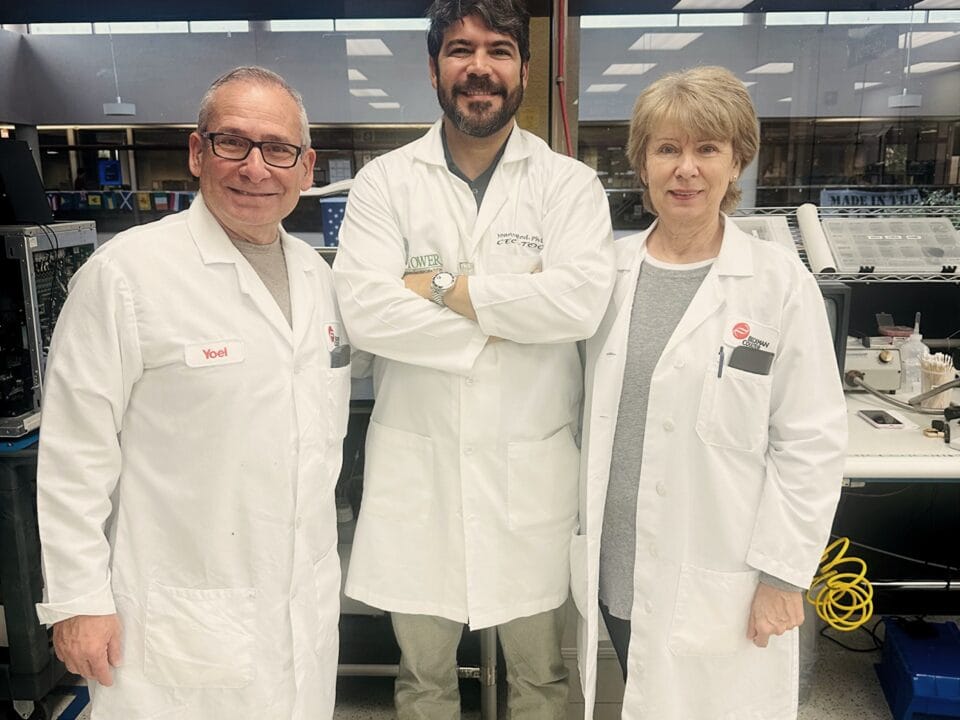
Zero-Order vs Multi-Order Waveplates: What’s the Difference?
Sunday, 29 June, 2025
Precision Optical Coatings
Saturday, 9 August, 2025Tower Optical:
The convergence of quantum computing, artificial intelligence, and optical polarization isn’t just revolutionary—it’s mathematically elegant. Here’s how the equations driving this transformation are reshaping technology.
The Quantum Advantage in Numbers:
Quantum Superposition allows qubits to exist in multiple states simultaneously:
|ψ⟩ = α|0⟩ + β|1⟩
Where |α|² + |β|² = 1, enabling exponential computational scaling.
Quantum Entanglement creates correlated states essential for quantum AI:
|ψ⟩ = (1/√2)(|00⟩ + |11⟩)
This non-local correlation enables quantum algorithms to outperform classical AI in specific optimization problems.
Optical Polarization: The Mathematical Foundation
Jones Vector Representation describes polarization states:
Linear Horizontal: |H⟩ = [1, 0]ᵀ
Linear Vertical: |V⟩ = [0, 1]ᵀ
Circular Right: |R⟩ = (1/√2)[1, -i]ᵀ
Waveplate Operations use Jones matrices for precise polarization control:
Half-Wave Plate (θ = 0°):
M_HWP = [1 0 ]
[0 -1]
Quarter-Wave Plate:
M_QWP = [1 0]
[0 i]
These components enable quantum gate operations with mathematical precision.
Quantum AI Performance Metrics:
Quantum Speedup for specific problems:
T_classical = O(N²)
T_quantum = O(√N)
Quantum Neural Network activation with polarization encoding:
f(x) = ⟨ψ_out|M_N…M_2M_1|ψ_in⟩
Where M_i represents waveplate operations encoding neural network weights.
The Tower Optical Advantage
Precision Specifications:
Waveplate retardance accuracy: ±λ/300
Beam splitter ratio tolerance: ±1%
Temperature stability: <0.01°/°C
These tolerances enable quantum coherence times exceeding 100 microseconds—critical for practical quantum AI applications.
The Mathematics of Success
The equation for quantum AI success isn’t just computational—it’s
manufacturing precision:
Success = (Quantum Algorithm × AI Innovation) / (Decoherence × Manufacturing Tolerance)
Tower Optical Corporation maximizes this equation through precision optics that minimize decoherence while maintaining the exact specifications quantum systems demand.
Future Implications
Quantum Error Correction requires optical components with error rates below the quantum threshold:
P_error < 10⁻⁴
Scalability depends on maintaining quantum coherence across N qubits:
Coherence_total = Coherence_single^N
This exponential scaling makes component precision exponentially more critical.
The Bottom Line
The quantum AI revolution is built on mathematical foundations that demand unprecedented precision in optical components. Companies like Tower Optical aren’t just manufacturing parts—they’re enabling the mathematical precision that makes quantum AI possible.
hashtagQuantumComputing hashtagArtificialIntelligence hashtagOpticalEngineering hashtagQuantumAI hashtagPrecisionOptics hashtagMathematics hashtagInnovation hashtagTechTrends hashtagQuantumMath hashtagFutureTech



